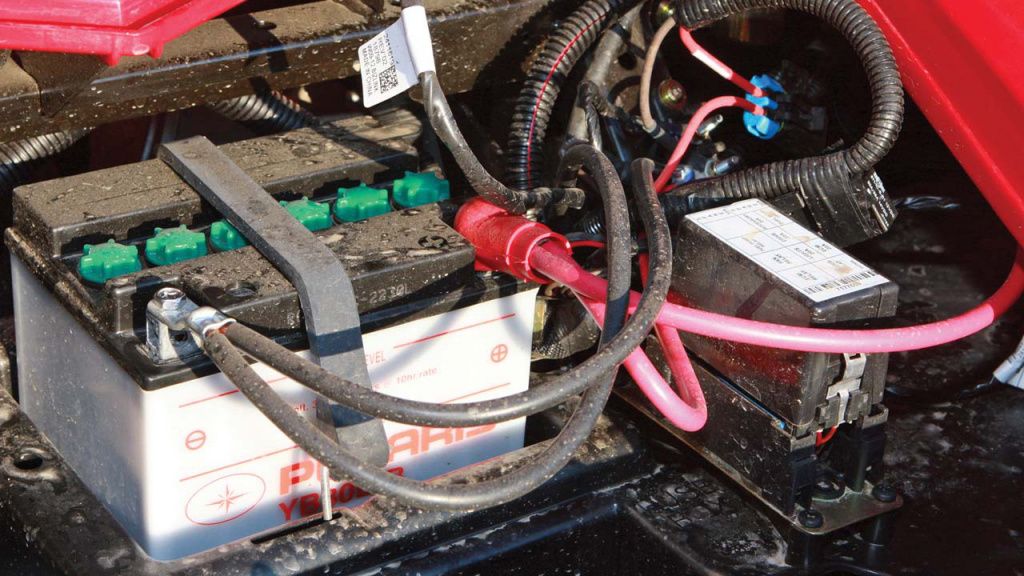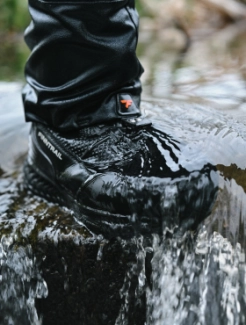Reasons Your ATV Battery is Getting Hot and How to Fix It
Your ATV battery can be warm, but it should never be hot to the touch or overheat, whether you've been riding or when charging it with a battery charger. If you're experiencing this, you need to look into the cause right away. This post will explain the reasons your ATV battery is getting hot and tell you how to fix it.
Is a Hot ATV Battery Dangerous?
A hot battery can fail, cause damage to you r ATV, and be very dangerous to you.

What Are the Main Causes of a Battery Getting Too Hot?
ATV batteries usually get too hot because the battery is defective or it is being overcharged. You can determine which one is happening by checking the following things.
Voltage regulator rectifier
The voltage regulator rectifier turns AC current from the stator into DC current that can be used by the ATV's electrical components and maintains voltage at a stable 14.5V that is required for the electrical components of the ATV, including the battery.
You can test the voltage regulator rectified with a multimeter.
Set the multimeter to 20Vin the DC range, and place the red lead on the positive battery terminal and the black on the negative terminal.
Test it with the ATV off and on. When off, the multimeter should give you a reading of 12.4 to12.6V. Turn the ATV on and idle it. Write down or memorize the reading you get. Then rev the engine to up to 3,000RPM and take another reading.
You should find an increase of about 13 to 14.5V. 14.8V is possible. If the readings fluctuate or read something lower or higher than this, your regulator is defective.
With a bad regulator, you might also notice that the lights fluctuate in brightness when you rev the ATV. This is a visual indication that the voltage is getting too high before you test it.
If it is bad, you'll need to replace it. The regulator can be combined with the ECU unit, which unfortunately means you have to replace both at the same time.
A Bad Battery Cell
Another likely cause of a battery getting too hot is a bad cell in the battery itself.
Batteries are made up of multiple cells that each contain a certain amount of the battery's voltage. All of them must function normally for the battery to function. When they don't, the others are left to take more charge than they can handle, leading to overcharging and overheating.
You can test the battery yourself or take it to your ATV dealer to have them test it.

Charging Incorrectly
If you charge an ATV battery, or any battery, for too long or with too much current, it overcharges and overheats. You will probably notice the battery getting too hot when you're using an external charger rather than after riding.
Mind the amp setting
If you've been charging your ATV battery at more than 3A, that is likely the cause of the problem. If your battery is just hot to the touch, you can start charging it correctly and see if it continues. If your battery is showing signs of having overheated, bulging, an odor, etc., get a new battery.
Don't overcharge
If you leave your battery unattended while charging or just mistakenly overcharge it because you think it doesn't matter, a manual charger doesn't know when the battery is charged completely and will continue to give it current as long as it's connected.
The electrolyte fluid inside the battery will start to boil. The evaporating fluid has a noticeable smell that some describe as smelling like rotten eggs.
The gasses are also highly explosive.
Unplug the charger to stop the current flow, but don't disconnect the battery or do anything that may cause any sparks. Allow the gasses to dissipate for 30 minutes or longer.
Don't use an automotive trickle charger on your ATV battery, because they provide too much charge.
If you can't manage a manual charger, go with an automatic one. Automatic chargers do know when your battery is fully charged and will only give it more current when needed to maintain the charge.
Charge on the right mode
Different battery types have unique current requirements. If you charge a lead-acid battery with the same amount of current a GEL battery needs, you'll overcharge it and cause overheating.
Low electrolytes in lead-acid batteries
It isn't a bad idea to sometimes check a lead-acid battery's electrolyte level. Some ATV models are known to excessively drain a battery, so you'll particularly want to check the battery on those machines.
There is a minimum level mark on the battery. If the level is too low, you can add some water to the cells to continue using the battery.








































